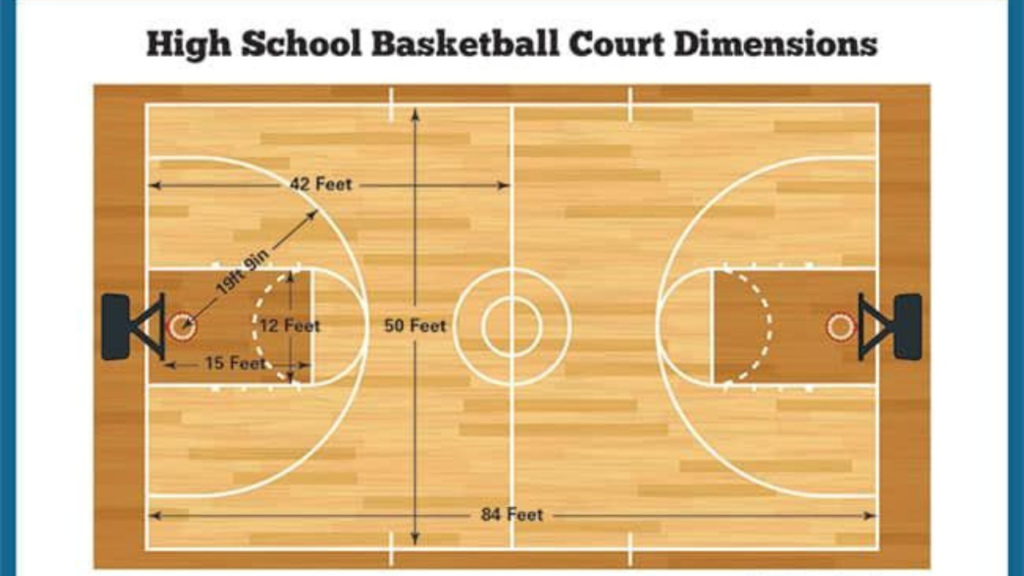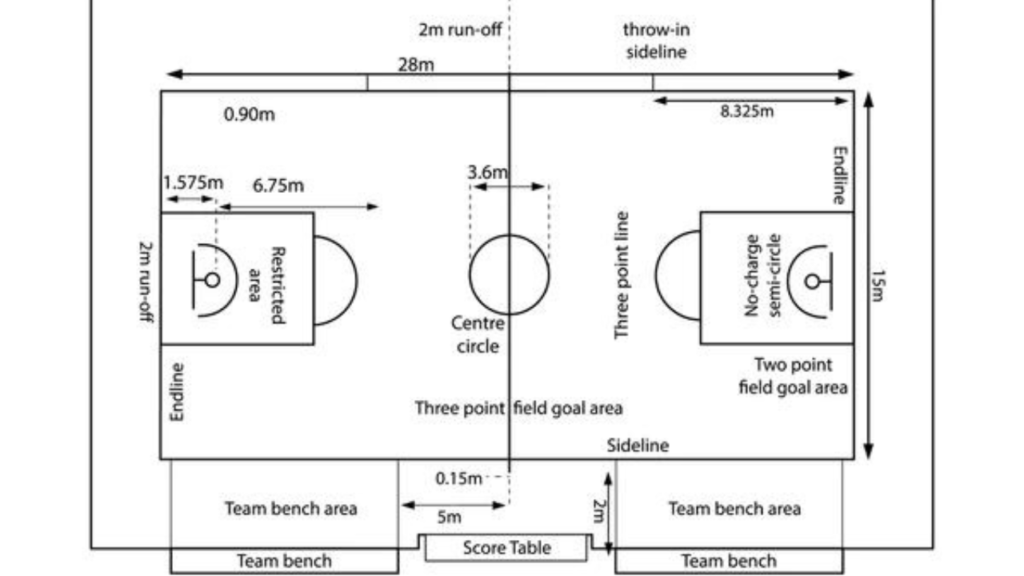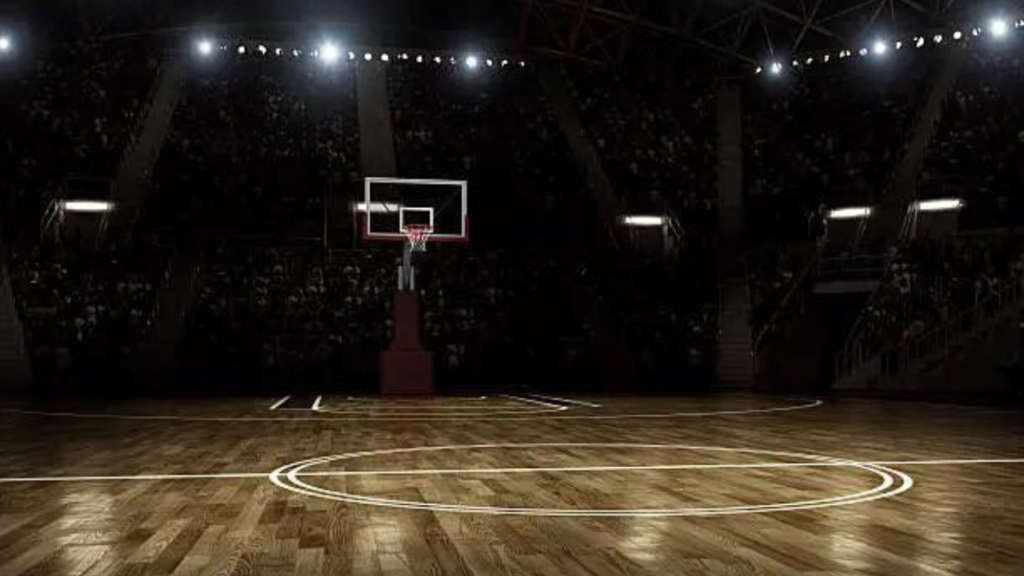Basketball is a beloved sport played at various levels, from elementary school to the professional leagues. One crucial aspect that varies across these levels is the size of the basketball court. In this guide, we’ll focus on the high school basketball court size, exploring its dimensions, how it compares to other levels, and why these measurements matter.
The Basics of High School Basketball Court Size
The size of a high school basketball court is standardized to ensure consistency in gameplay. The National Federation of State High School Associations (NFHS) says that a standard high school basketball court is 84 feet long and 50 feet wide. This size is slightly smaller than the courts used in college and professional basketball.
High School Basketball Court Size in Feet
When we talk about the high school basketball court size in feet, it’s essential to break down the key areas:
- Length: 84 feet
- Width: 50 feet
- Foul Line: 15 feet from the backboard
- Three-Point Line: 19 feet 9 inches from the basket
- Key (Paint Area): 12 feet wide

These measurements ensure that players have enough space to maneuver while maintaining a level of intimacy that keeps the game fast-paced and exciting.
High School Basketball Court Size in Meters
If you prefer the metric system, a high school basketball court measures about 25.6 meters in length and 15.24 meters in width.
. The key dimensions in meters are:
- Length: 25.6 meters
- Width: 15.24 meters
- Foul Line: 4.57 meters from the backboard
- Three-Point Line: 6.02 meters from the basket
- Key (Paint Area): 3.66 meters wide
High School Basketball Court Size vs. NBA
One common question is how the high school basketball court size compares to an NBA court. NBA courts are bigger, coming in at 94 feet long and 50 feet wide. This difference in size affects the pace and style of play. High school players benefit from the smaller court as it suits their developing skills and physical capabilities.
High School Basketball Hoop Size
The hoop size in high school basketball is the same as in the NBA and other levels of play. The basketball rim is 18 inches across, and it sits 10 feet high above the court. This consistency helps players transition smoothly from one level to the next.
Key Areas of the High School Basketball Court
Understanding the layout of a high school basketball court involves knowing the key areas:
- The Key (Paint Area): This area is 12 feet wide and extends from the baseline to the free-throw line. It’s crucial for offensive and defensive plays.
- Three-Point Line: Arcs 19 feet 9 inches from the basket, encouraging long-range shooting.
- Foul Line: Positioned 15 feet from the backboard, where free throws are taken.
- Baseline and Sidelines: Define the boundaries of the court.
Importance of Standardized Court Sizes
Standardizing the size of high school basketball courts ensures fairness and consistency in the game. It allows players to develop their skills in a familiar environment, making it easier to transition to higher levels of play. Coaches can also design strategies and drills that are applicable across different courts.

How Court Size Affects Gameplay
The size of the high school basketball court influences various aspects of the game:
- Pace of Play: The smaller court size leads to a faster-paced game with more frequent transitions between offense and defense.
- Player Development: Young athletes can develop their skills in a space that matches their physical capabilities.
- Strategy: Coaches can implement strategies that take advantage of the smaller court, such as pressing defenses and fast breaks.
Building or Renovating a High School Basketball Court
When building or renovating a high school basketball court, it’s essential to adhere to the standard dimensions. This ensures that the court meets official regulations and provides a suitable environment for players. Considerations include:
- Surface Material: Hardwood is the preferred material for its durability and performance.
- Markings: Ensure all lines are clearly marked and adhere to the standard measurements.
- Hoops and Backboards: Install regulation-size hoops and backboards to provide a consistent playing experience.
Conclusion
Understanding the high school basketball court size is crucial for players, coaches, and anyone involved in the sport. The standardized dimensions ensure a fair and consistent playing environment, helping young athletes develop their skills and prepare for higher levels of competition. Whether you’re a player looking to improve your game or a coach designing practice drills, knowing the court’s layout and measurements is essential.
By familiarizing yourself with the size of high school basketball courts, you can better appreciate the nuances of the game and contribute to a more enjoyable and competitive basketball experience. So next time you step onto the court, you’ll have a deeper understanding of the space you’re playing in and how it shapes the game of basketball.


3 Comments
Pingback: Why are basketball hoops orange? - Hoop Gain
Pingback: The Ultimate Guide to Play on Basketball Court at Night - Hoop Gain
Can you be more specific about the content of your article? After reading it, I still have some doubts. Hope you can help me.